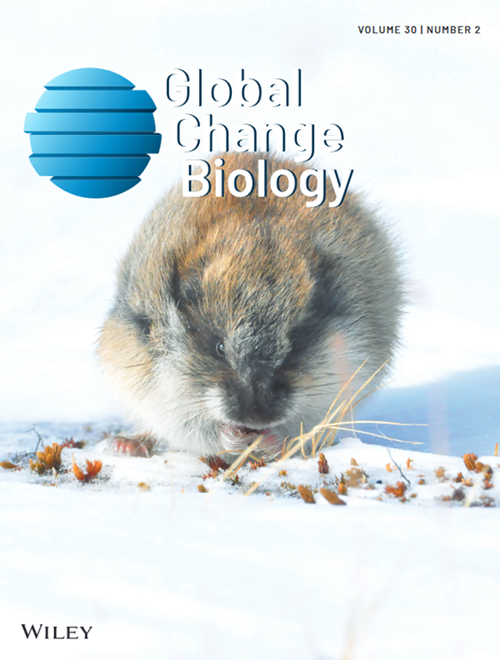Hydroxyl Radical-Driven Oxidation as a Key Pathway for Greenhouse Gas Production During Soil Drying-Rewetting.
IF 12
1区 环境科学与生态学
Q1 BIODIVERSITY CONSERVATION
引用次数: 0
Abstract
The drying-rewetting of soil can increase the release of greenhouse gases over a short time period and is one of the key pathways for greenhouse gas emissions in many terrestrial ecosystems, particularly in drylands. The mechanisms underlying this pulse of greenhouse gas emissions remain nearly unknown. Here, we conducted simulated soil rewetting experiments using typical cover of dryland soils (bareland, cyanobacteria/lichen-covered soil, and moss-covered soil). The 13C, 15N, and 18O labeling techniques allowed to explore the intrinsic mechanisms of rapid carbon (C) and nitrogen (N) release from the soils following rewetting. We found that the hydroxyl radical (˙OH) was produced after soil rewetting via the rapid activation of microorganisms. The carbon dioxide (CO2) and nitrous oxide (N2O) production strongly decreased after ˙OH removal, whereas the methane (CH4) production was not affected. The synergistic action between ˙OH oxidation and microbial enzymatic reactions increased CO2 production. The ˙OH also stimulated the oxidation of NH4 + to NO3 - and dominated the N2O production. Our results confirm the role of ˙OH in the production of greenhouse gases and indicate that microbially mediated ˙OH oxidation mechanisms are an overlooked key pathway for the emission of greenhouse gases during the soil rewetting. In the context of climate change, the extreme weather-induced drying-rewetting cycles in soils are becoming more frequent, making greenhouse gas emissions via the ˙OH oxidation pathway increasingly important.土壤干-复湿过程中羟基自由基驱动氧化产生温室气体的关键途径
土壤的干燥-再湿润可以在短时间内增加温室气体的释放,是许多陆地生态系统,特别是旱地温室气体排放的关键途径之一。这种温室气体排放脉冲背后的机制几乎仍然未知。在此,我们利用典型的旱地土壤覆盖物(裸地、蓝藻/地衣覆盖土壤和苔藓覆盖土壤)进行了模拟土壤再湿润实验。13C、15N和18O标记技术允许探索土壤在再湿润后快速释放碳(C)和氮(N)的内在机制。我们发现,在土壤再湿润后,微生物的快速活化产生了羟基自由基(˙OH)。˙OH去除后,二氧化碳(CO2)和氧化亚氮(N2O)产量显著降低,而甲烷(CH4)产量不受影响。˙OH氧化和微生物酶促反应之间的协同作用增加了CO2的产量。˙OH也促进了NH4 +氧化为NO3 -,并主导了N2O的生成。我们的研究结果证实了˙OH在温室气体产生中的作用,并表明微生物介导的˙OH氧化机制是土壤再湿润过程中温室气体排放的一个被忽视的关键途径。在气候变化的背景下,极端天气导致的土壤干-再湿循环越来越频繁,这使得˙OH氧化途径的温室气体排放变得越来越重要。
本文章由计算机程序翻译,如有差异,请以英文原文为准。
求助全文
约1分钟内获得全文
求助全文
来源期刊

Global Change Biology
环境科学-环境科学
CiteScore
21.50
自引率
5.20%
发文量
497
审稿时长
3.3 months
期刊介绍:
Global Change Biology is an environmental change journal committed to shaping the future and addressing the world's most pressing challenges, including sustainability, climate change, environmental protection, food and water safety, and global health.
Dedicated to fostering a profound understanding of the impacts of global change on biological systems and offering innovative solutions, the journal publishes a diverse range of content, including primary research articles, technical advances, research reviews, reports, opinions, perspectives, commentaries, and letters. Starting with the 2024 volume, Global Change Biology will transition to an online-only format, enhancing accessibility and contributing to the evolution of scholarly communication.
 求助内容:
求助内容: 应助结果提醒方式:
应助结果提醒方式:


